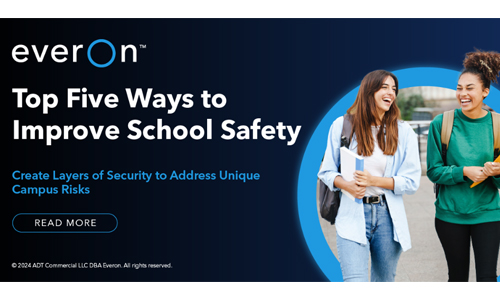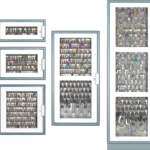No one set of physical security solutions is right for every campus. However, a layered, systems-based approach can help to detect, delay, and respond to threats while helping to avoid any single point of failure.
Think of layering security like concentric circles starting at the outer perimeter of your school campus, working toward the center. Each successive layer can include specific components that provide a protective element to hinder adversarial behaviors and delay an attack if other layers are breached. Delaying an assailant can afford the critical time needed for first responders to take appropriate action.
1. Ensure Compliance with District-Wide Security Standards
Be sure you have deep understanding of and are consistently adhering to district-wide standards to establish recommended best practices, including frequent lockdown drills and regular training so everyone—from students to faculty—knows what to do in an emergency.
Consider evaluating existing measures or implementing critical new practices, including annual security assessments, effective visitor management systems, first responder training for school staff, and more.
2. Prioritize a Layered Approach to Perimeter Security
The physical security of a campus begins at the property perimeter boundary, where the most outwardly visible security deterrents to an external threat can be implemented. Focus on the following best practices to help better secure these outermost campus areas:
- Posting visible notice of the rules and responsibilities at the property boundary.
- Prioritizing parking lot and facility security, since these are some of the most high-traffic areas.
- Implementing emergency call stations with direct connection to emergency responders.
- Installing comprehensive video surveillance, security lighting, and access control systems to monitor access throughout the parking areas.
3. Build an Interior Layer of Security to Protect Classrooms and Offices
A clearly marked numbering system and signage for the entire building is a basic requirement to provide first responders directions to key areas of the school should an incident occur. Many of the same measures used to respond to threats across other layers of the campus also apply to the interior, with access control systems at the top of the list.
All classrooms and offices must have functional locks with varying levels of technology available, including stand-alone electronic locks, automatic networked electronic locks, and master keys provided to first responders. Other technologies include:
- Panic/duress alarms to discreetly notify first responders of an emergency.
- Security film on interior door vision panels to help prevent door glass from shattering and increase the time an assailant would need to access a classroom.
- Classroom doors made of steel or other durable materials to help prevent unauthorized access.
- Interior barriers to impede the movement of an intruder throughout the building.
4. Implement Effective Mass Notification Systems and Practices
During active shooter incidents or other emergencies, prompt notification is critical in saving lives. Quick announcement must be made in a clear, audible message to everyone on campus. This requires, at a minimum, a working public address system enhanced by newer technology innovations, such as:
- In-building emergency communications systems that enable notifications to specific classrooms or other areas to provide instructions from law enforcement.
- Mass notification solutions tied to a district-wide system that provide fast, automatic notification to all district schools, stakeholders, and law enforcement.
5. Establish Comprehensive Video Surveillance Coverage
Video coverage of all interior and exterior areas of buildings, especially where students and staff congregate, is a powerful tool. Providing first responders access to video means they can quickly respond to an emergency and potentially pinpoint an assailant’s location, movements, or hiding spots. These systems must be consistently evaluated and tested to ensure no blind spots exist and that all cameras are functioning properly.














